As our vehicles roll to a stop along the muddy track, a postcard-perfect scene stretches before us. Rolling prairie dotted with beautiful wildflowers, with towering snow-capped peaks in the background. But the kids around me don’t notice any of it.
“Antler!” one of them cries, and the group is off, running across the rolling hills. A youngster is soon hoisting an impressive elk antler over his head. His friends look on with admiration, but soon another antler is spotted, and another.
I’m at The Nature Conservancy’s Zumwalt Prairie Preserve in northeast Oregon for what has become an annual event: a search for antlers shed by bull elk each spring. They’re collected by community members and sold to benefit the local 4-H and FFA groups.
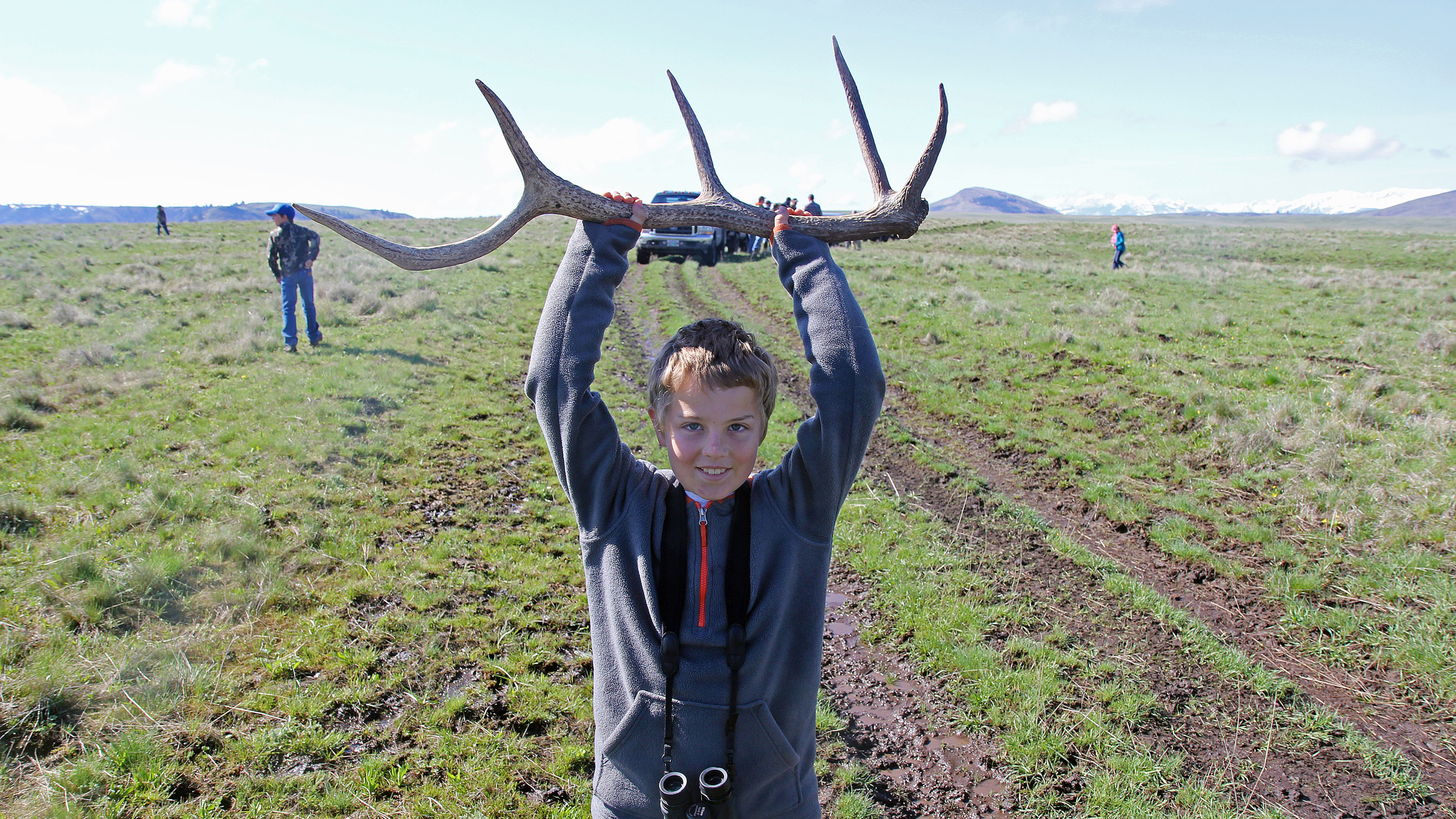
Standing on the grasslands, it feels somewhat like an Easter egg hunt on steroids, with the “eggs” being antlers. As it turns out: a lot of antlers.
Lots of Elk on the Prairie
All members of the deer family shed their antlers each year, and finding these “sheds” has increasingly become a popular springtime activity for hunters and naturalists. I enjoy hunting for mule deer sheds in the hills behind my Boise home, and have published a couple of blogs on the subject.
Justin Jones, the Conservancy’s steward for the Zumwalt program, read those blogs and invited me to participate in one of the elk shed hunting days held on the Conservancy’s preserve every year. I’ve been meaning to visit Zumwalt for years.
In my experience, shed hunting can feel at times like finding the proverbial needle in the haystack, but Jones promised that the elk antlers would be plentiful. How could I resist? And so my wife Jennifer and 16-month-old son Derek hopped in the car for a shed hunting road trip.
We pulled into the preserve’s “summer camp” – a set of buildings that houses students and researchers – on a recent Saturday morning, with a line of other vehicles following. All around me stretched stunning grassland, the habitat protected at Zumwalt.
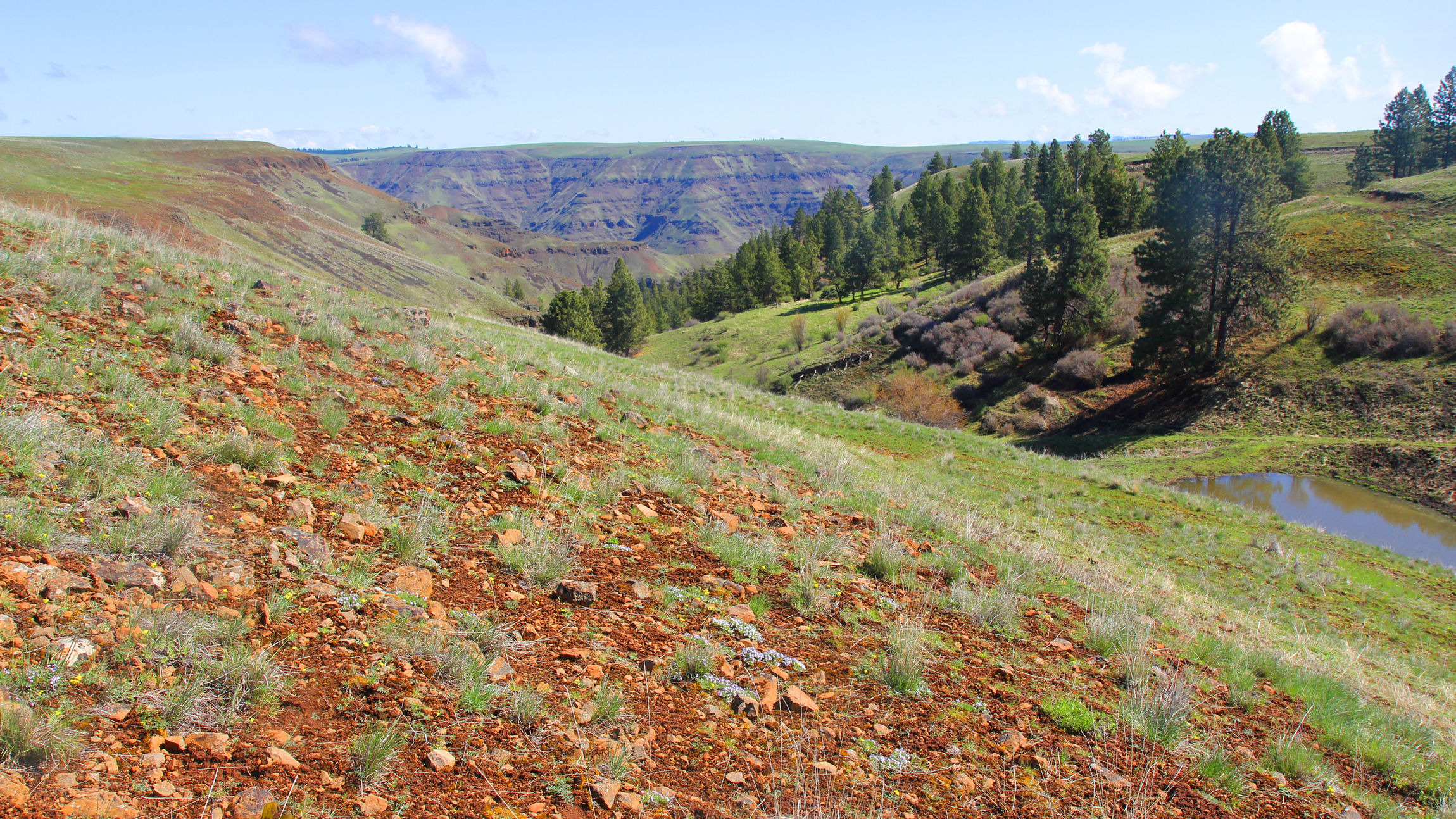
The preserve is 33,000 acres, making it Oregon’s largest privately owned nature sanctuary. A large population of ground squirrels draws an astonishing number of raptors. On just our short visit, we had stunning, close-up views of both Golden Eagles and Ferruginous Hawks. Grassland birds similarly abound. The preserve is home to a wide variety of other creatures from rare native bumblebees to mountain lions.
And there are elk. Lots of elk. In fact: too many elk.
The Oregon Department of Fish and Wildlife (ODFW) divides the state into management units, each with an elk population objective. In the Chesnimus Unit, where Zumwalt is located, has an objective of 3500 elk, but the herd size is 5500 animals.
This overpopulation stresses the habitat in particular aspen communities. Aspens are a quintessential Western tree, and provide excellent habitat for a wide variety of wildlife species. They’re also in decline, and many aspen stands are not regenerating.
“We are losing aspen on Zumwalt and we know elk are a major factor,” says the Conservancy’s Justin Jones.
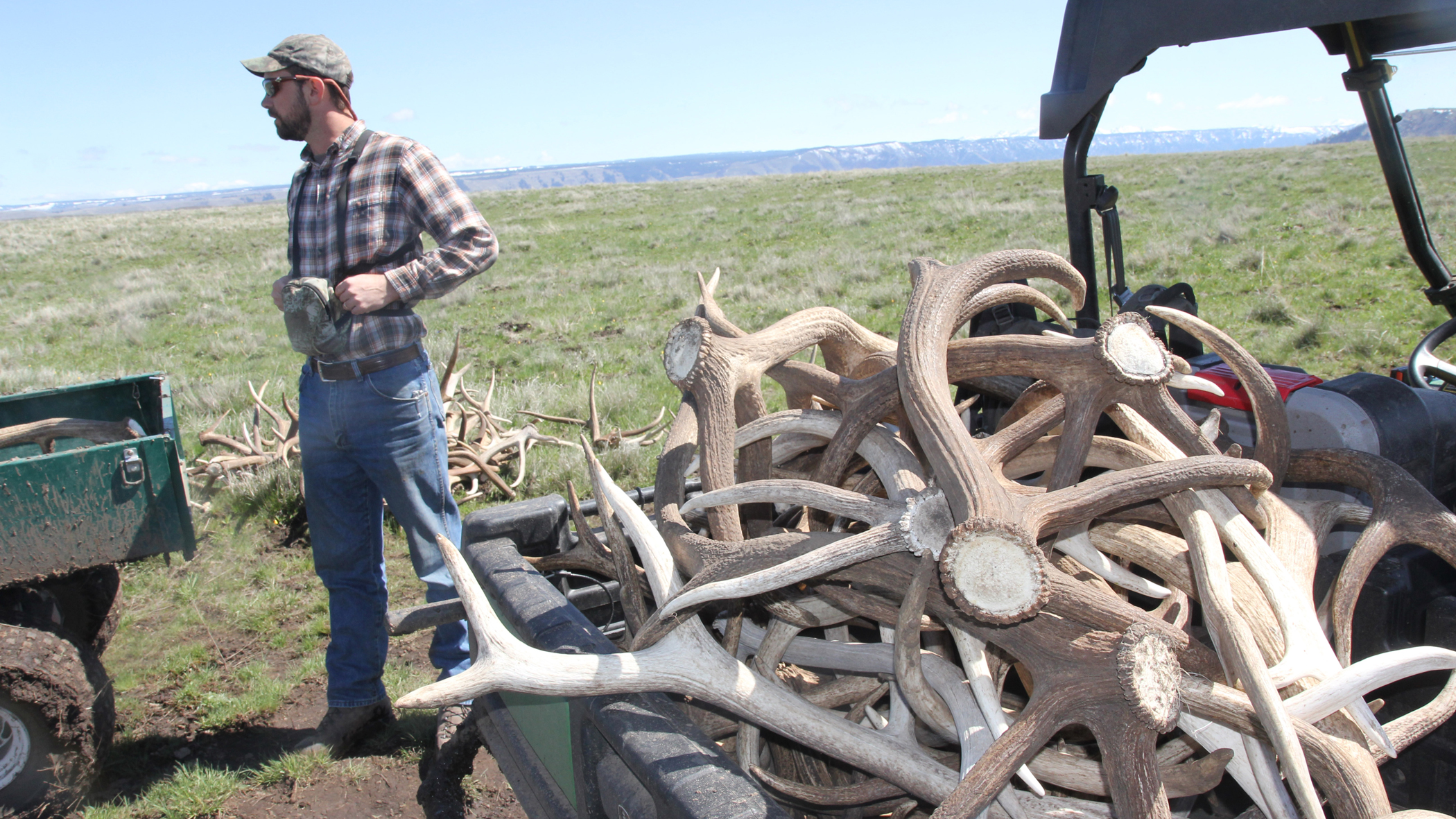
Conservancy staff know this from a monitoring program that places fences around aspen stands. Some of these are built to exclude all ungulates – elk, deer and cattle (the preserve includes a managed grazing program). Other fences are built to exclude cattle but allow elk and deer to enter.
“When all ungulates are fenced out, the aspen regenerate and are doing well,” says Jones. “If we just fence out cattle, it doesn’t make a difference. The aspens still get hammered. So cattle grazing is not the determining factor. The deer population is low. Elk are the primary culprit.”
As such, elk management has become a significant conservation activity on the preserve. It is also a way to involve the local community. Each fall, the preserve allows carefully managed antlerless elk hunting, run through ODFW. The hunting not only reduces the elk population but keeps elk moving away from sensitive habitats.
“It has also allowed us to become a bridge between sportsmen and the broader conservation community,” says Jones.
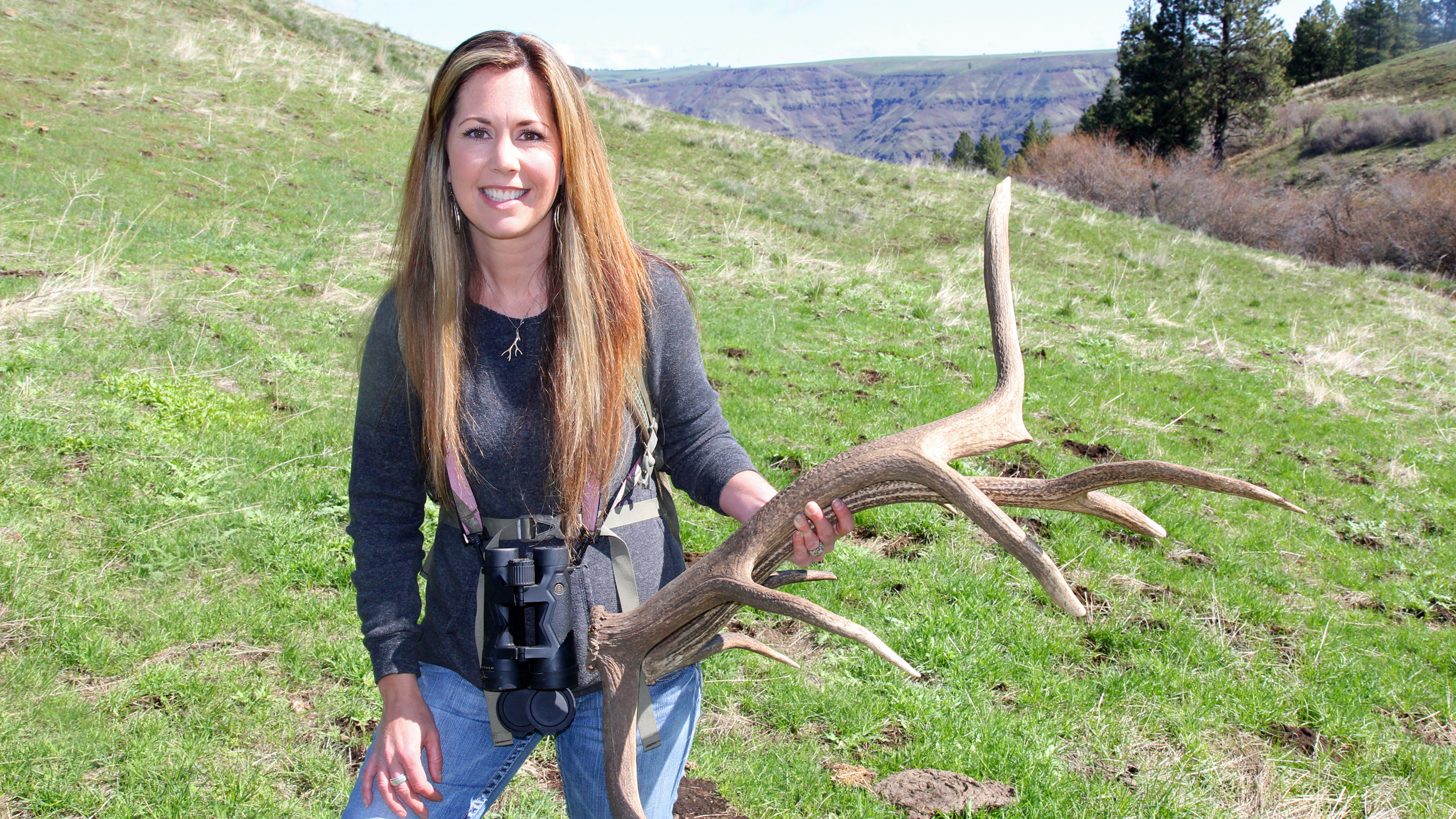
Indeed, most of the camo-clad shed hunters surrounding me are avid elk hunters. They’re here for a fun outdoor quest that also benefits the local community. For the past four years, shed antlers have been sold to a buyer, with the proceeds benefiting the 4-H and FFA to support their annual livestock sale.
Antlers bring about $14 a pound for brown antlers and $10 for the typically older, more brittle white antlers. They’re sold for use in home décor and as dog chew toys. Last year, the preserve’s shed hunting days generated $12,500 – a significant amount for community youth.
When I earlier met Conservancy assistant steward Mike Beachy to travel to the preserve, he mentioned that last week’s event had resulted in 40 antlers being found. That seemed astonishing number; as a shed hunter, I consider finding one to be a successful outing. I wondered if there would be any left to find.
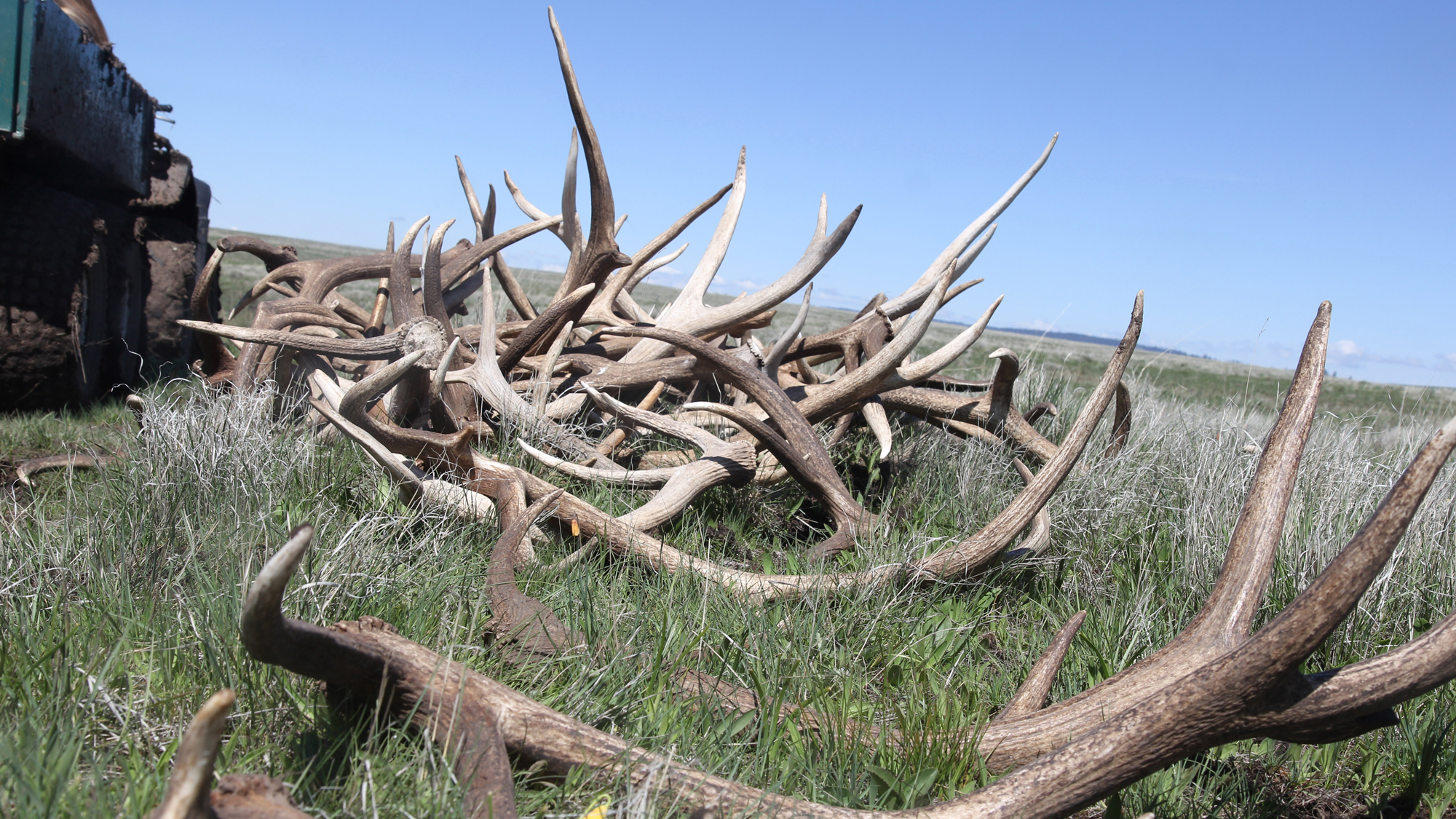
As if reading my mind, Beachy said, “We should find more today. The area we’re going is where a lot of bull elk hang out.”
A Parade of Antlers
Today’s event is geared toward youth, and about 25 kids and their parents have shown up to search. After a brief orientation from Jones, families spread out to cover the prairie. Some have a game plan, scanning hillsides with binoculars and covering the bare ridges where bulls hang out. Others just trot out across the landscape, hoping to stumble across a big one.
Within minutes, a quick scan across the vista reveals nearly every group holding at least one antler. Jones and Beachy use ATV’s to assist with picking up the bounty; a couple large antlers make for a heavy load.
This is local farmer Doug Beck’s third shed hunt of the season. A few weeks earlier, he had spotted a bachelor herd of 76 bull elk near today’s hunting spot. “This is absolutely the best spot to find antlers. Everyone should find at least one today,” he says. “I’m a farmer so I often don’t have as much time as I’d like to help out the community. This is a way to get outside and benefit a good cause.”
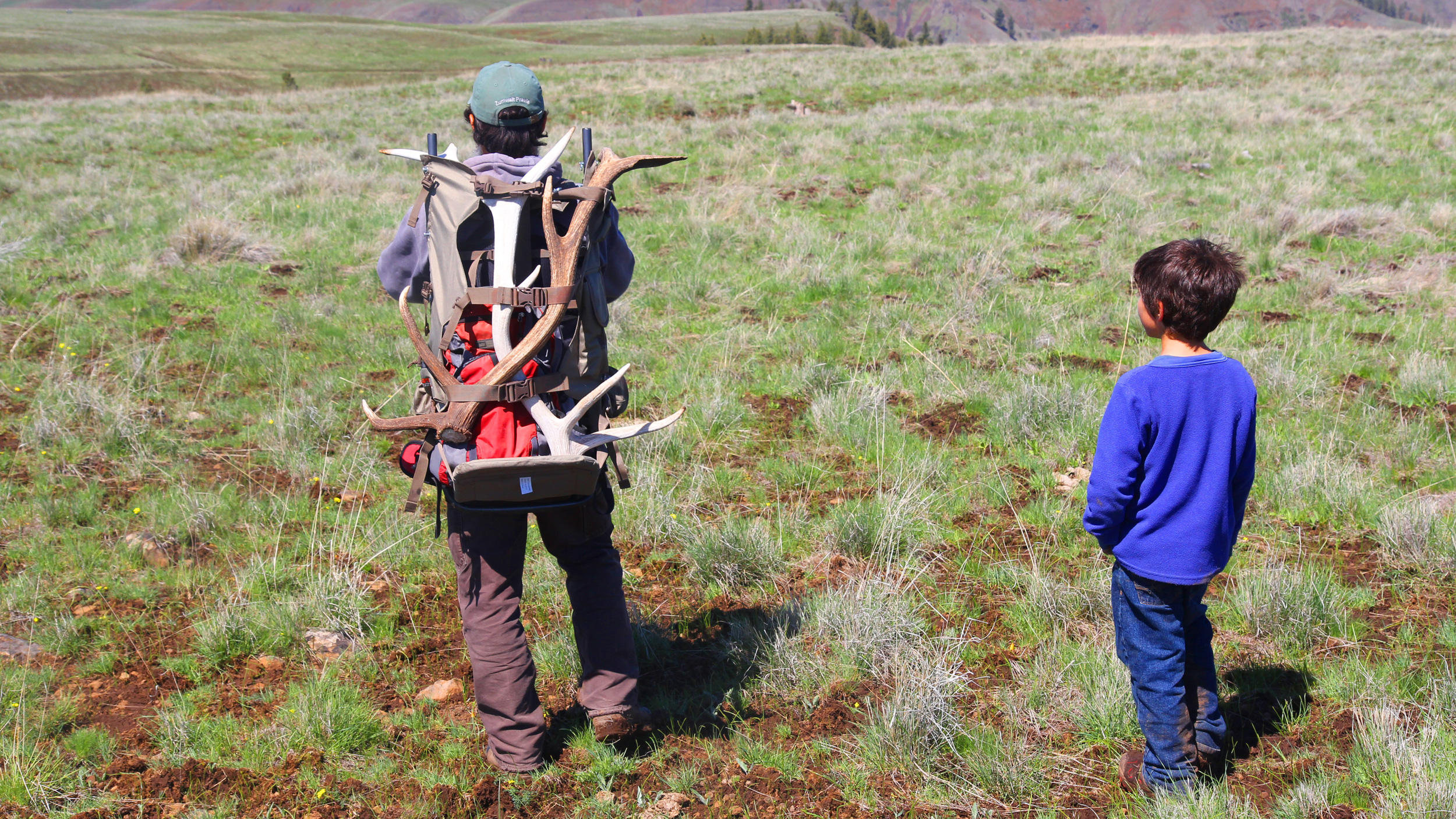
All around, it seems, shed hunters both young and old are reveling in the bounty. In one grassy canyon I come across Terri Hook and her family, loaded down with antlers. They’re experienced searchers and already carry an impressive haul.
“I’m here for the kids. We are outside all year long, camping, hunting, searching for morel mushrooms,” she says. “The kids just love this day. They have an absolute blast. It’s like a treasure hunt.”
As I’m watching other shed hunters, my own family has slipped out of sight. I start hiking the rolling hills to catch up, and soon find them. My wife Jen calls out that she hasn’t found one yet. Her love is native plants, and so far she has photographed 8 different species of wildflowers.
But soon she is in the hunt, excitedly pointing. There’s an antler on the ground, and quickly another. I find my own, a small, twisted antler. And then Jen finds a beautiful, heavy six-point antler.
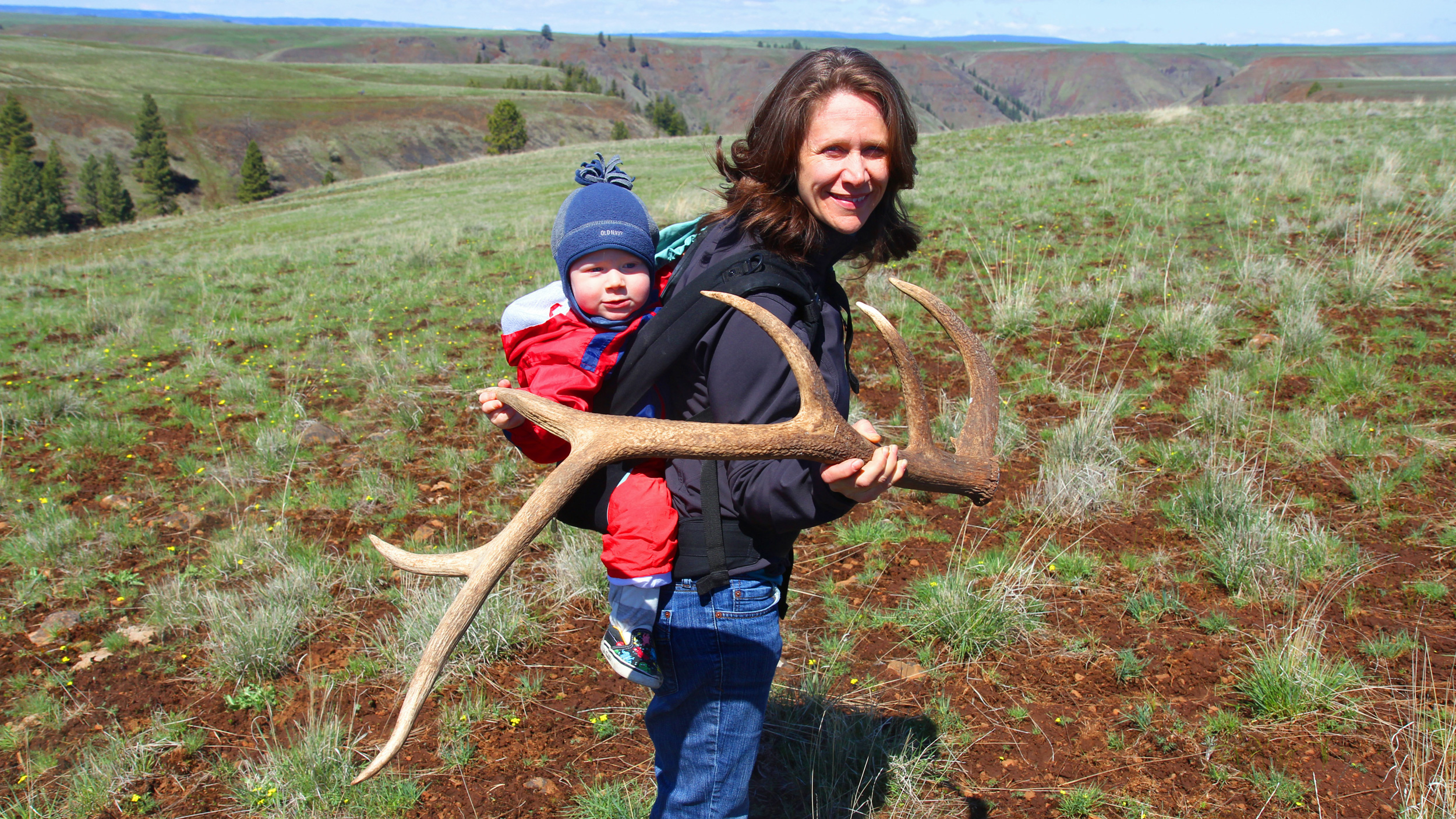
“That one will bring more than $100,” says Beachy, who strolls up with a backpack to haul out the find.
My son Derek, riding in a backpack, reaches out to touch the antler. He is in his glory, surrounded by running kids and calling meadowlarks.
Soon, Derek has had enough and so Jen catches a ride back to the rendezvous site. I hike back too, picking up another antler along the way. As families converge back to our gathering site, it seems everyone has an antler. They’re piling up.
Jones spreads them out and asks for guesses. Kids are shouting out: 50, 55, 70. One brave boy says, “I think there’s 90,” and other kids laugh.
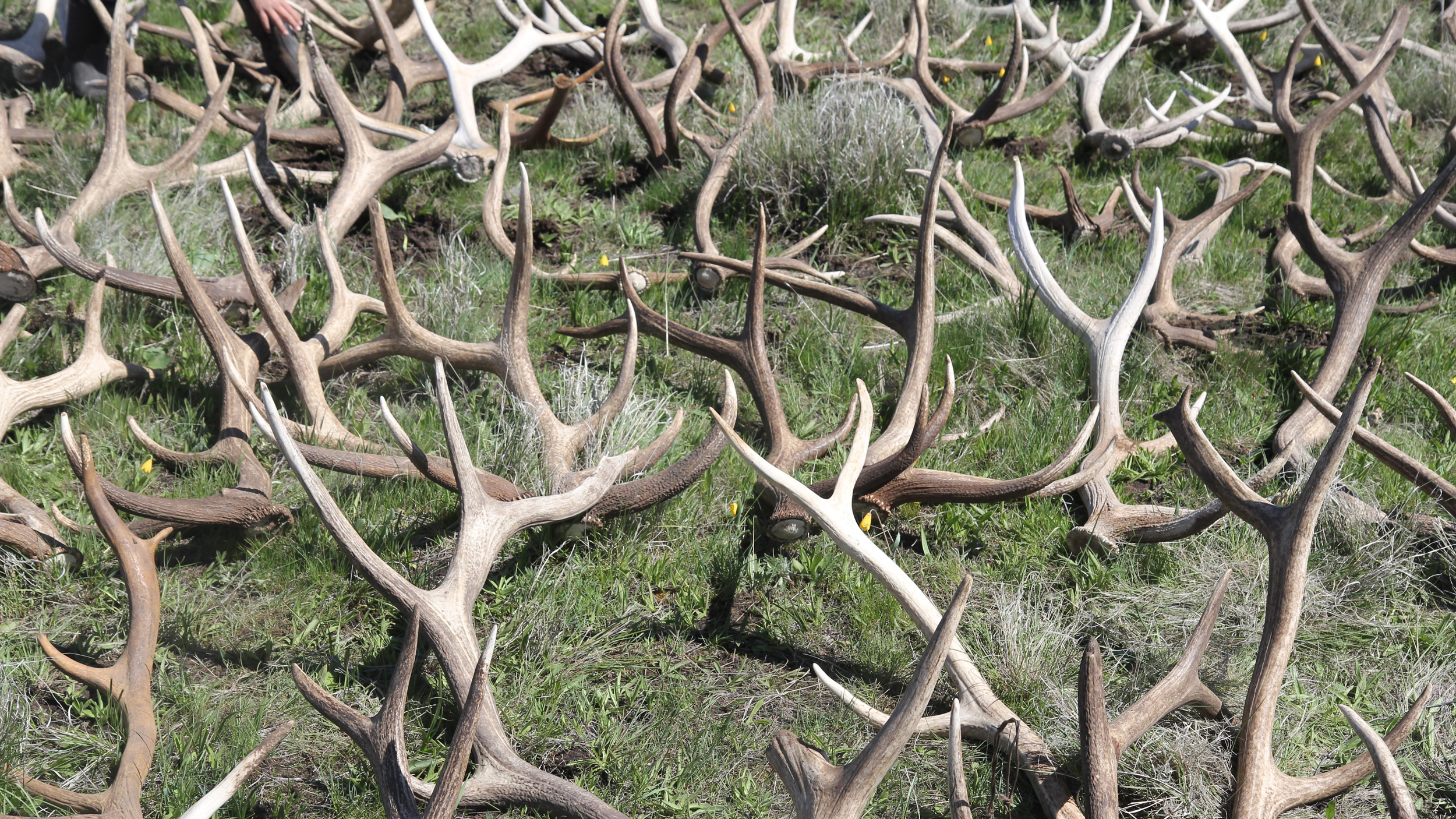
It turns out he’s low. The final count is 167 antlers, setting a new record for Zumwalt shed hunts. Yes, these finds represent an elk over-abundance.
But they’re also a powerful tool. I survey the scene around me: hunters eye particularly big specimens, counting points. Small children hoist antlers over their heads. Farmers share stories with conservation managers.
The love of antlers and elk and elk hunting – loves I share – connect us all to this beautiful prairie on a gorgeous spring day. It is a celebration of families in nature and of outdoor life – among the many benefits provided by conservation.
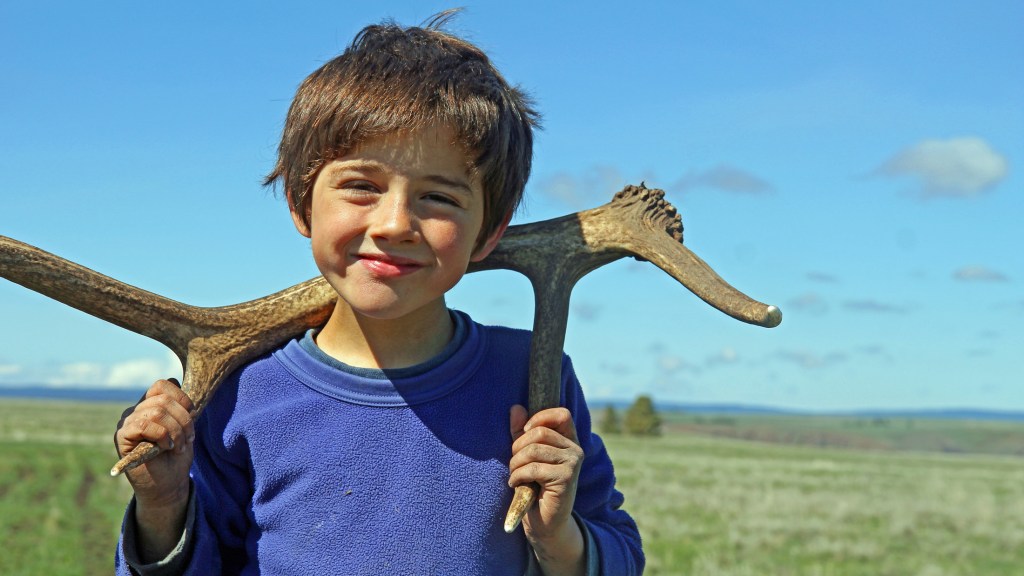



Very shortly this web page will be famous among
all blogging people, due to it’s pleasant articles
Do you mind if I quote a couple of your articles as long as I provide credit and sources
back to your website? My blog is in the exact same area of interest as yours and my
visitors would truly benefit from some of the information you provide here.
Please let me know if this okay with you. Thank you!
Hi Rosiaria, Thank you for interest! Please do quote us as long as you provide credit to the author and link back to the original post on Cool Green Science.